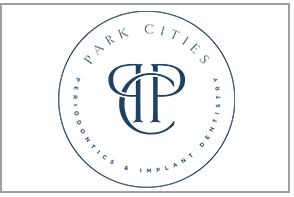Minor gum recession may be treated with a specialized deep cleaning known as root scaling and planing, which aims to reduce the size of pockets that develop in the gums.
For cases of more advanced recession, dental surgery known as gum grafting can help to restore your smile and your oral health.
In this dental surgery, the periodontist takes a small piece of soft tissue from elsewhere in the mouth, such as the palate, and sutures it into the area of insufficient gum tissue. This procedure is completed in the periodontist’s office using a local anesthetic. Patients can also choose sedation for a more comfortable experience.
If bone loss has accompanied the receding gums, the periodontist may also need to complete a procedure that supplements the bone in the vicinity to ensure that the gums have the structural support they need.
Periodontal disease is the most common cause of gum recession, and it is important to have any active gum disease under control prior to receiving a gum graft. If the gum disease continues to progress, the gum graft may fail and the patient may require further treatment.
Gum disease is not the only factor that causes recession, though. Genetics and even an overly aggressive brushing technique can also be responsible for your receding gums.
Aftercare following the gum graft is important to the procedure’s success. Closely follow the post-operative instructions provided by the periodontist. Avoid smoking while you heal from the surgery, and ideally give up smoking permanently if you still have the habit.
To prevent a recurrence of receding gums, patients also need to maintain a thorough home oral hygiene routine. Brush twice a day for at least two minutes a session, and consider using a power toothbrush, which can be more effective at dislodging bacteria-laden plaque from the teeth. Keep up with your daily flossing, too.
Patients who have signs of receding gums, including tooth sensitivity and a change in a tooth’s appearance (in which more of the crown is visible) should be evaluated for gum recession and discuss treatment options with our experienced periodontist at Park Cities Periodontics and Implant Dentistry.
